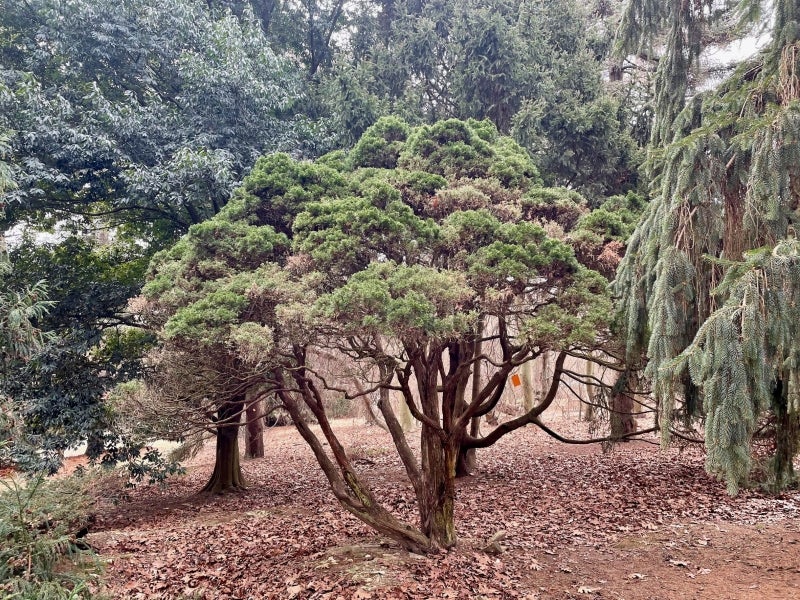Blog



Juniperus virginiana (eastern redcedar) is a common native evergreen tree spread by birds that eat and disseminate the blue, berry-like seed cones. Historically, it has been highly valued by Native Americans for healing purposes, by American colonists as a cedar wood replacement, and by 18th-century Europeans eager to embellish their landscapes with attractive, hardy plants from the American colonies.
Juniperus is the Latin name for this type of conifer, and virginiana means “of Virginia.” The common name eastern redcedar conveys key features: its eastern North American nativity, reddish-brown bark, and dull red heartwood that is aromatic like true cedar wood. Eastern red-cedar can be written with a hyphen, signaling that this tree is not a true cedar; no Cedrus is native to North America.
The seven specimens of J. virginiana at the Morris Arboretum have interesting backstories. Two specimens of the cultivar ‘Glauca’ were accessioned in 1932 as existing plants on the Morris Estate, indicating that the Morrises appreciated this silver redcedar, a cultivar known before 1868 in France. The single straight species was planted as a seed in 1936 by “Unspecified Morris Arb. Staff” and the photo below shows its characteristic shaggy, reddish-brown bark sometimes compared to pulled pork.
‘Globosa,’ a cultivar with a spherical habit, was planted in 1947. ‘Pyramidalis,’ showing a narrow, upright growth form, was obtained as a cutting from the New York Botanical Garden in 1949; NYBG’s specimen is no longer alive, demonstrating the value of sharing.



In 1995, two specimens of J. virginiana ‘Corcorcor’ were planted near the Gardener’s Cottage on Hillcrest Avenue. ‘Corcorcor’ was a chance seedling selected at Clifford D. Corliss and Brothers Nursery Inc., explaining the repeating syllable “cor.” The trademark name for this cultivar is EMERALD SENTINEL™ (a trademark name restricts the right to use that plant name), emphasizing its bright green foliage and rather narrow, upright habit. A plant patent restricts the right to propagate the plant, and EMERALD SENTINEL™ is patented as PP5041. ‘Corcorcor’ is a female cultivar, thus ensuring those attractive berry-like cones, which the male plants of this usually dioecious species do not produce.


As you walk though Pennsylvania woods or abandoned fields, and when you visit the Morris Arboretum, be on the lookout for J. virginiana; you may see evidence of its important role in the ecosystem: Cedar Waxwings (named for their love of the berry-like cones), juniper hairstreaks (green butterflies whose caterpillars depend on juniper foliage), or even apple-cedar rust (a golf-ball-sized, orange fungus that requires J. virginiana to complete its life cycle). The exact location of all J. virginiana at the Morris Arboretum can be found at Collection Connection.
Katherine has her Certificate in Botany from the New York Botanical Garden and is a botanical tour guide and free-lance writer. You can contact her with comments or requests for photos at botanicaltours.weebly.com